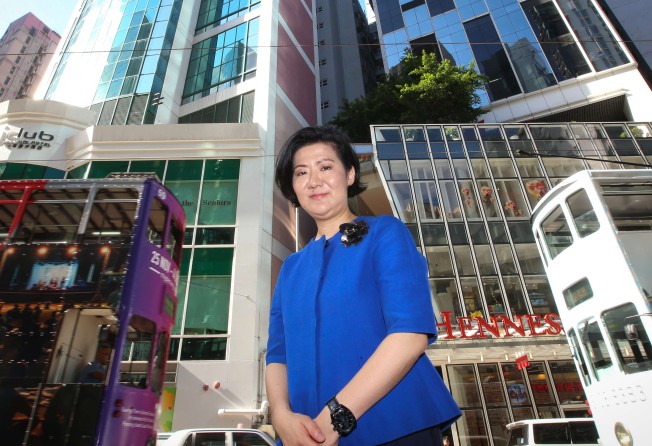Altering existing buildings can provide benefits that outweigh rebuilding, architect says
Architect Chow Wai-lee is an advocate of an overlooked approach towards property development in Hong Kong -- adding to and altering existing structures for new uses

Chow Wai-lee, the founder of WDA Group, has nearly 30 years of local and international experience in the construction industry, having worked on projects in Hong Kong, Macau, mainland China and other countries.
She graduated from the Oxford Institute of Architecture and completed her Master of Architecture degree at the University of Washington in the United States.
Chow was born in Hong Kong and her devotion to architecture is inseparable from her family and upbringing. Her father, Chow Yei-ching, is the chairman and managing director of Chevalier International Holdings, which has businesses ranging from property and hotel management, engineering and construction, to food and beverages. He was a passionate supporter of multiculturalism.
What made you enter the industry?
When I was a kid, my father always brought me to his office on Saturday. Every time I saw his staff drawing buildings and floor plans, I was very excited and copied them. I also have a strong sense of space in architecture and I enjoy the process of holding hands with clients to solve problems.
Why is additions and alterations (A&A) building works so important?
A&A is just like a health check. All buildings should have A&A works done every five to 10 years. It will refresh the property and give it a new and longer life span. Do it before the building decays.
(Editor’s note: Generally, alteration and addition refers to work carried out on an existing building that does not affect the foundation work. Examples include constructing a new extension block, adding additional floors, combining two or more units into one by removing the partition walls and subdividing a unit into smaller units.)
However, the general public has no idea what A&A is, and many owners overlook its importance.
It is an option for property owners to upgrade their assets rather than tearing them down and rebuilding. The quality of the building after A&A work is no worse than a newly-built structure.
The A&A approach can lead to significant cost savings and enhanced benefits. It will take three to four years to redevelop a project, But A &A takes just one year.
What is the comparison of value enhancement between redevelopment versus A&A? Can you name some successful examples?
As a rule of thumb, A&A projects must reach a stringent minimum requirement of a double digit per cent of return in terms of value enhancement before any green light will be given. Some projects’ yield can increase many fold and can reach a high double digit per cent jump in value.
For a typical A&A assignment, a complete health check on the existing building condition is recommended. The shell of the existing building needs to be checked to see if there are any signs of fatigue or non-compliance against what is on the government’s record. We would often recommend a complete conditional survey taken on site for safety requirements and issues such that fire escape routes and calculations or any outdated structural and safety standards can be improved and corrected.
All A&A projects take into consideration the forecast and projections of the challenges and ever-changing environment brought about by the internet world, mass transit changes and its impact on pedestrian and vehicular traffic, route changes and thus customer expectations of efficient and effective entry and exit traffic flow from the building property.
We recently hit a 40 per cent gain in floor area in one client’s residential A&A project as we challenged ourselves and looked beyond the mere hardware construction and aesthetics issues due to a recent change in the outline zoning plan of a 30-year-old property.
What is your recommendation to property owners?
So for many property owners who are not sure whether to go for a total redevelopment or A&A, our recommendation would be to hire an authorised person to perform both a physical building health check (to look for hardware fatigue and property image enhancements) as well as to tackle the surrounding social and demographic changes in the area (in order to maximise the commercial value enhancements). Also to avoid any foreseeable issues due to recent changes in land lease and related planning conditions.
Do you have an example of A&A project undergoing significant changes?
Here is an example to show how a complex/multiple A&A project was designed and built over a decade and a half ago for today’s needs.
Hong Kong Jockey Club – Sha Tin and Happy Valley Racecourses, which was done in 2000 to 2004 . WDA Group was the lead consultant in master planning for both Sha Tin and Happy Valley racecourses.
At that point in time, WDA Group was given the task to transform the race day experience to a world class standard. It was a multiple A&A projects designed and built over 16 to 17 years ago for today’s needs. The Parade Ring was redesigned to bring closer access to the Public. Space segmentation further provided alternative entertainment areas. The retractable roof of the Parade Ring in the Sha Tin Racecourse was the finale of this large scale Master Planning project.
Most A&A projects that we plan today will need to be sustainable in use for at least the next 10 to 20 years.